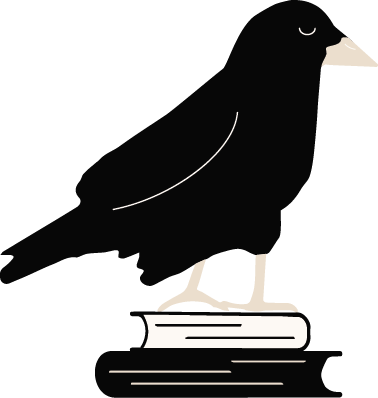
It's almost Halloween, which makes this a great time to write about spooky things! In today's blog post (and its follow up), we're looking at villains—what make them convincing, and why they can sometimes fall flat.
Does every story have a villain?
Think of a story that doesn’t have an antagonist. J.S. Dewes discusses some in “Who Needs a Villain?”, such as disaster stories like Night of the Twisters by Ivy Ruckman or protagonist vs. society stories like The Giver by Lois Lowry. I’d add The Martian by Andy Weir to Dewes’ list as a spectacular example of a protagonist vs. environment story.
But even within these villain-free examples, there are struggles for the protagonists to overcome. I wouldn’t call a tornado or a planet an “antagonist,” although I think that in The Giver, the restrictive society Jonas grows up in is its own form of villain.
In fiction, overcoming struggles—personal or societal—is how a character becomes a hero. Whether the antagonist is a person or a society or a disaster or a planet, there’s something for the protagonist to struggle against and emerge as a new, better person.
The most common way for writers to create this struggle is through a specific person—a villain. A villain provides a clear set of challenges for the protagonist to prove themself against and distinct stakes upon which to build a conflict.
But as we, as readers, know, not all villains are equally convincing. So today, let’s look at what makes a convincing villain and where some villains fall flat.
The pure evil villain
Sometimes we encounter villains who are just purely bad. Not corrupted, not the result of bad or selfish choices—just evil. Dolores Umbridge comes to mind. As far as we know, there’s nothing in particular that made her the way she is; she’s just cruel and vindictive and awful.
Maybe this pure evil character is a metaphor. Maybe the villain is representative of greed or death or chaos or capitalism. Symbolic evil is more likely to appear in fairy tale retellings or parabolic stories.
But unless the villain is deliberately symbolic, a pure evil villain is uncreative and reductive. People are not completely good or completely bad. No one is born bad. This is as important to remember in life as it is in fiction. Even the worst villains in our society are a product of the situations they grew up in and the people who influenced them. People learn cruelty from the world around them, and your villains should, too.
Origins of villainy
Compelling villains have believable origin stories. Something should have happened in your villain’s past to make them the way they are.
Origin stories should be sympathetic, at least to some extent. Your reader should understand that the villain made their choices for a reason, even if the protagonist would have chosen differently. Maybe your villain comes from a society that teaches cruelty, and thus they learned it from childhood. Maybe your villain suffered a tragedy and now believes that the world does not deserve kindness. But there should always be a reason.
Villainy is about choices.
When faced with a dilemma, whose interests does your villain fight for—others, or themself? Does your villain have the opportunity to choose differently, and if they had chosen differently, would they still be villainous?
A villain is someone who, when confronted with a difficult choice, chooses wrong (according to our protagonist). Your villain should either recognize that they have chosen evil or should think that they have chosen good and that everyone else is wrong. Remember that everyone is the hero of their own story, and that good and bad are subjective.
A villain is someone who could have chosen to be kind, but instead chooses to be cruel. A villain is someone who says, “I suffered, and therefore you should too.” (Are people who think enormous hospital bills and student loans are justified villains? I tend to think so.)
The difference between a hero and a villain is that, when faced with the same choices, the hero chooses differently. A hero is someone who says, “I suffered, and I will fight to make sure that you don’t suffer as I did.”
Stay tuned for part two!
In “What Makes A Villain: Part Two,” we’ll look at more problematic elements of monsters and villainy and the ways that racism, stereotypes, and ableism sneak into fantasy.Do you want to learn to write better, more convincing villains? Get in touch today to make your villains the spookiest they can be.




